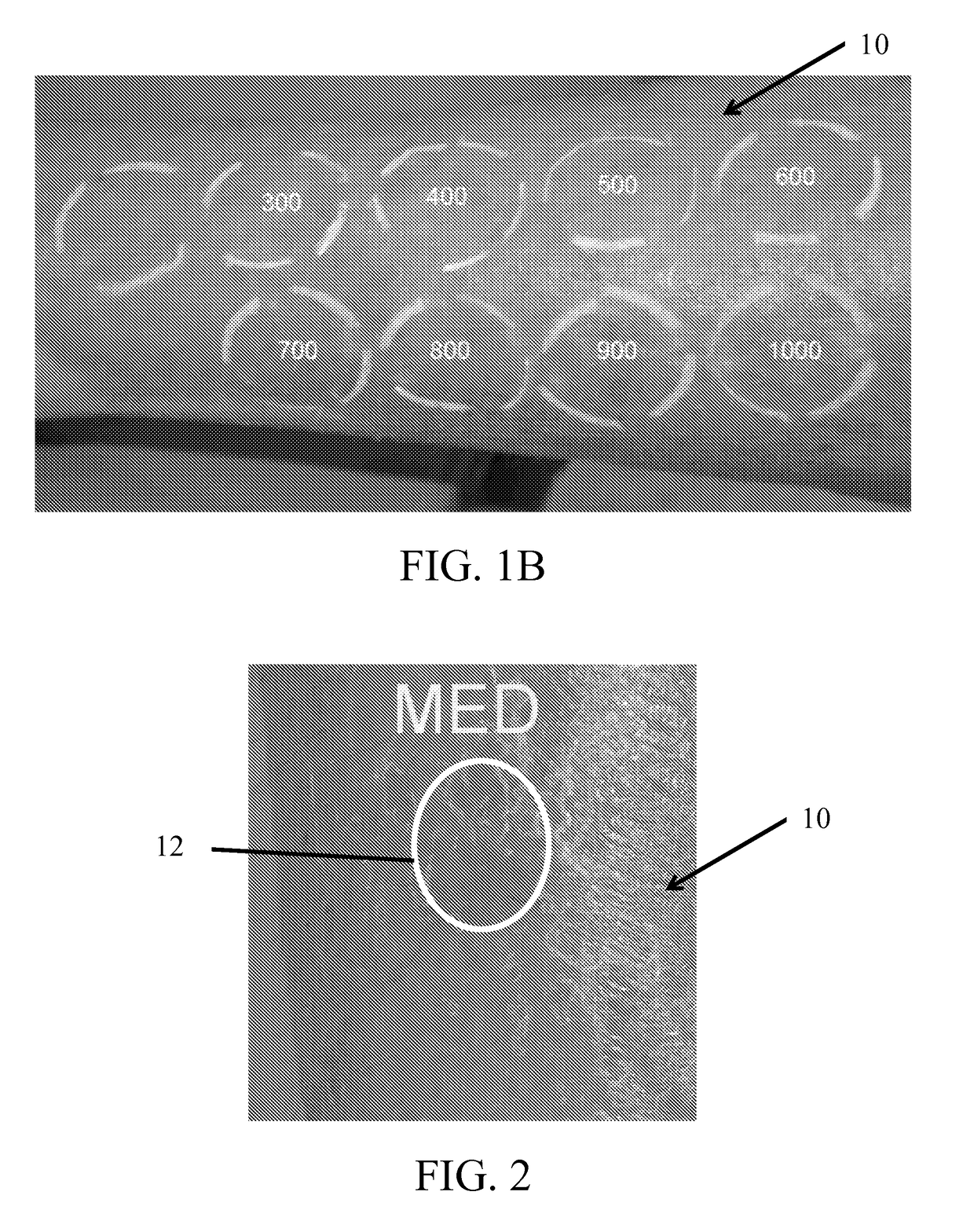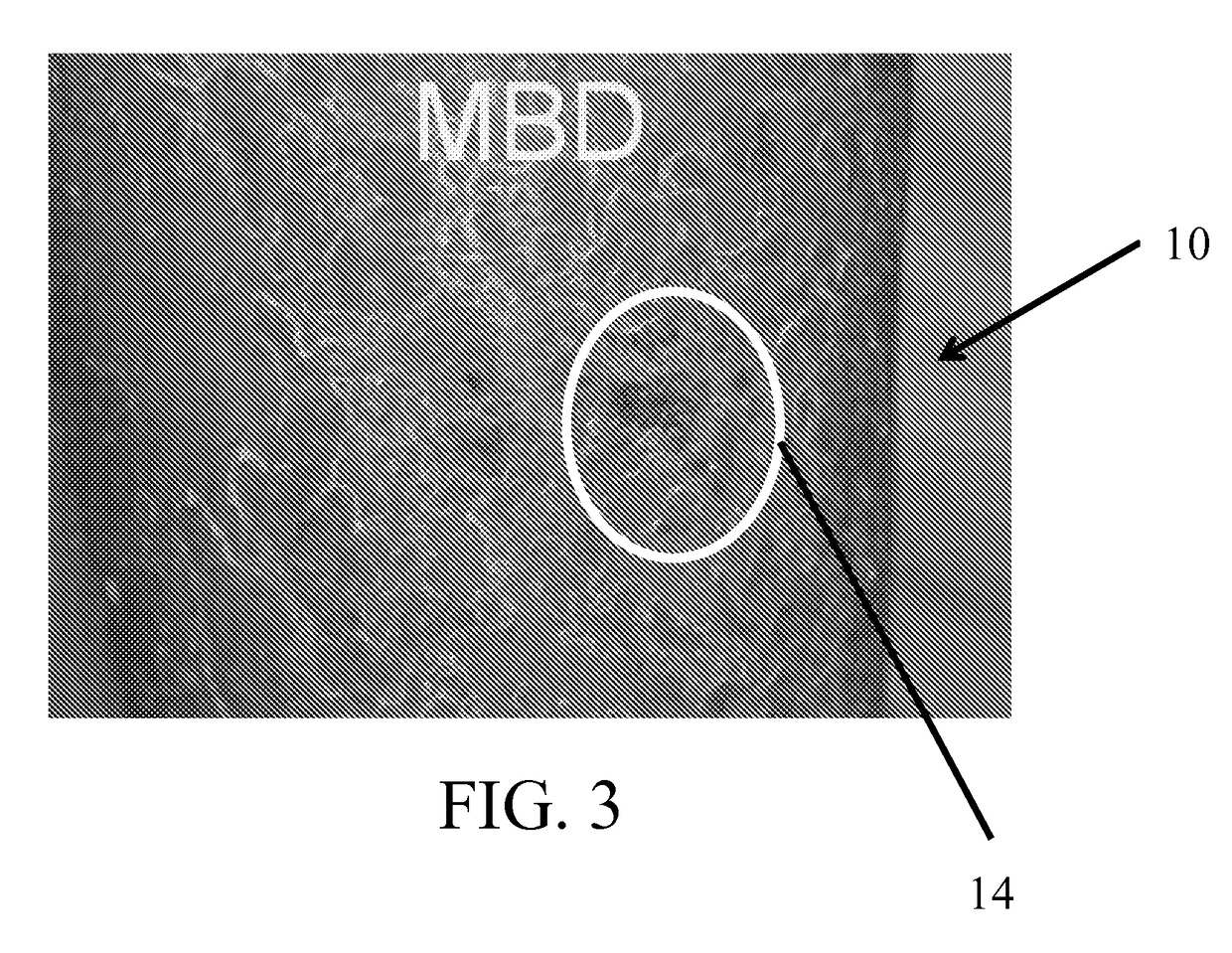Plaque targeted sub-blistering dosimetry
a dosimetry and target technology, applied in the field of skin disorders, can solve the problems of profound negative impact on the quality of life of patients, reduced therapeutic benefits, and psychological stress, and achieve the effect of optimal and maximally effective dosing of phototherapy
- Summary
- Abstract
- Description
- Claims
- Application Information
AI Technical Summary
Benefits of technology
Problems solved by technology
Method used
Image
Examples
Embodiment Construction
[0020]As discussed above, known phototherapy treatment of skin disorders (e.g., psoriasis) involves testing non-affected areas of a patient's skin tissue by applying doses of varying levels of UV light in an attempt to determine the patient's maximum tolerable dose. However, diseased skin, has a much higher tolerance to UV light than non-affected skin. Thus, testing non-affected areas of skin does not provide an accurate assessment of the patient's tolerance and in turn maximum dosage that can be applied to a region of the patient's skin that is affected by a skin disorder.
[0021]FIGS. 1-3 illustrate an embodiment of a method of testing a region of skin affected by a skin disorder prior to phototherapy treatment by applying dosages of incremental wavelengths of UV light directly to the region of skin affected by the skin disorder that is designated hereinafter by reference numeral 10. In an embodiment, the skin disorder is psoriasis.
[0022]UV phototherapy utilizes light in the UVB ban...
PUM
 Login to View More
Login to View More Abstract
Description
Claims
Application Information
 Login to View More
Login to View More - R&D
- Intellectual Property
- Life Sciences
- Materials
- Tech Scout
- Unparalleled Data Quality
- Higher Quality Content
- 60% Fewer Hallucinations
Browse by: Latest US Patents, China's latest patents, Technical Efficacy Thesaurus, Application Domain, Technology Topic, Popular Technical Reports.
© 2025 PatSnap. All rights reserved.Legal|Privacy policy|Modern Slavery Act Transparency Statement|Sitemap|About US| Contact US: help@patsnap.com



